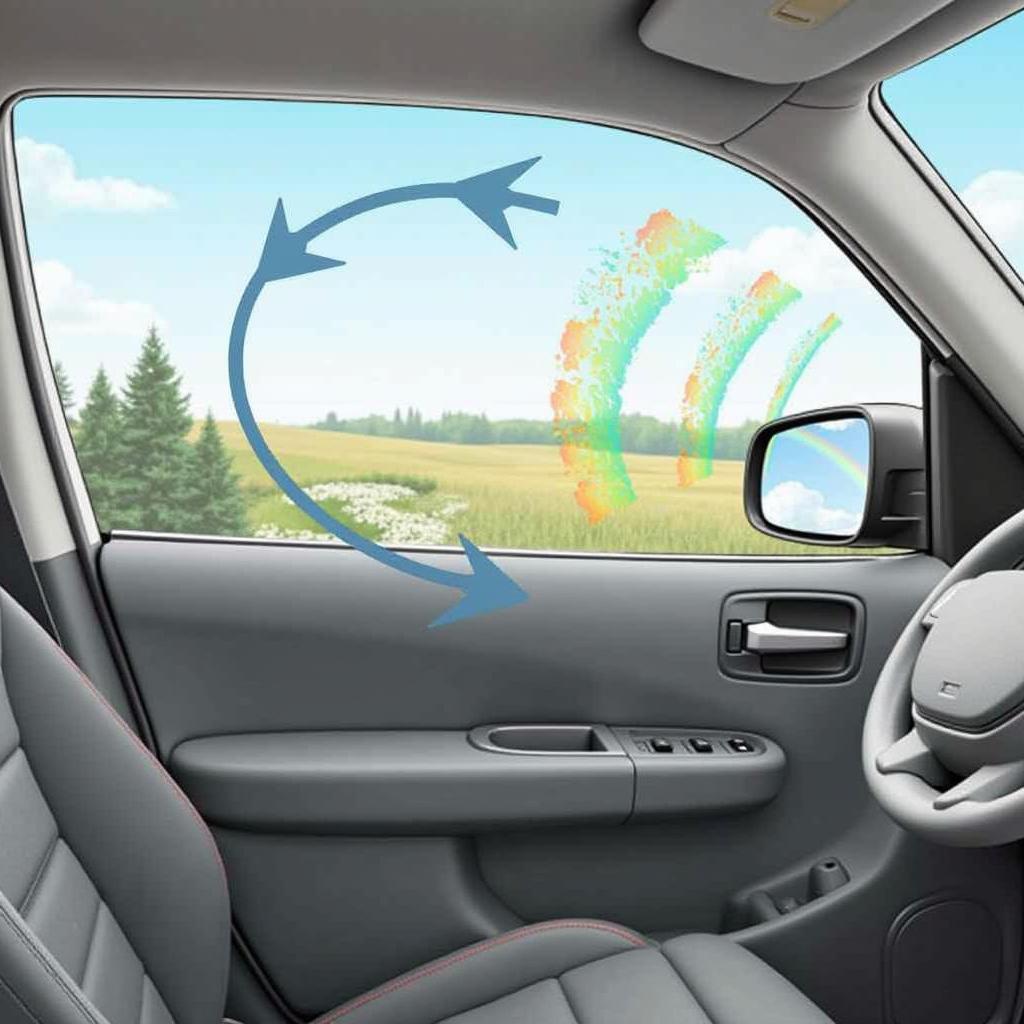The recirculation function in your car’s AC system is a small feature with a big impact. It circulates the air inside the cabin instead of drawing in fresh air from outside. But when is it useful, and what should you keep in mind? This article covers everything you need to know about AC recirculation.
A musty smell in your car? Exhaust fumes from the truck ahead? The recirculation function can help! Switching to recirculation interrupts the outside air intake and circulates the existing air within the cabin. This is particularly helpful in tunnels, traffic jams, or when encountering unpleasant outside odors. Learn more about cabin air filters.
What Does AC Recirculation Mean?
“AC recirculation” means that the air inside the vehicle cabin is recirculated. Instead of drawing in fresh air from outside, the already air-conditioned air inside the vehicle is continuously circulated and cooled. This saves energy and ensures faster cooling of the interior.
Benefits of the Recirculation Function
The recirculation function offers several advantages:
- Faster Cooling: Already cooled air is cooled down faster than constantly drawing in warm outside air.
- Energy Savings: The reduced cooling load consumes less fuel.
- Protection from Unpleasant Odors and Pollutants: Exhaust fumes, dust, and pollen remain outside.
 Car AC Recirculation Function Diagram
Car AC Recirculation Function Diagram
When Should You Use the Recirculation Function?
The recirculation function is particularly useful in the following situations:
- In Traffic Jams or Tunnels: It protects against exhaust fumes and unpleasant odors.
- In Case of Heavy Air Pollution: Pollen and dust are kept out of the passenger compartment.
- For Fast Cooling of the Vehicle Interior: On hot days, recirculation ensures a rapid temperature drop.
Disadvantages and Risks of the Recirculation Function
Despite the advantages, continuous use of the recirculation function also carries risks:
- Fogged Windows: The increased humidity inside the vehicle can cause the windows to fog up.
- Reduced Air Quality: The oxygen level in the interior decreases, which can lead to fatigue and reduced concentration.
- Spread of Bacteria and Viruses: Pathogens can multiply faster in the circulating air.
Tips for Proper Use of the Recirculation Function
To optimally utilize the benefits of the recirculation function and minimize the risks, consider the following tips:
- Do Not Use Continuously: Switch off the recirculation function regularly to let fresh air into the interior.
- In Case of Fogged Windows: Deactivate recirculation and switch the AC to fresh air intake.
- Regular AC Maintenance: A clean AC system prevents the spread of bacteria and unpleasant odors. You can check your car’s AC.
Frequently Asked Questions about AC Recirculation
- How do I activate the recirculation function? In most vehicles, there is a button with a symbol depicting a circular arrow inside the car.
- How long can I use the recirculation function? It is recommended not to use the recirculation function for longer than 15-20 minutes at a time.
- What should I do if the recirculation function does not work? In this case, you should visit a workshop. The air quality sensor might be defective.
Further Information
Further information on related topics can be found on our website: Recirculation with Drops and AC Temperature.
 Car AC Recirculation Maintenance
Car AC Recirculation Maintenance
Conclusion
The recirculation function of your air conditioning system is a useful tool that offers comfort and protection in many situations. However, keep in mind the tips mentioned above to minimize risks and ensure good air quality inside the vehicle. Feel free to contact us through our website if you have further questions or need assistance. Our car repair experts are available 24/7.
